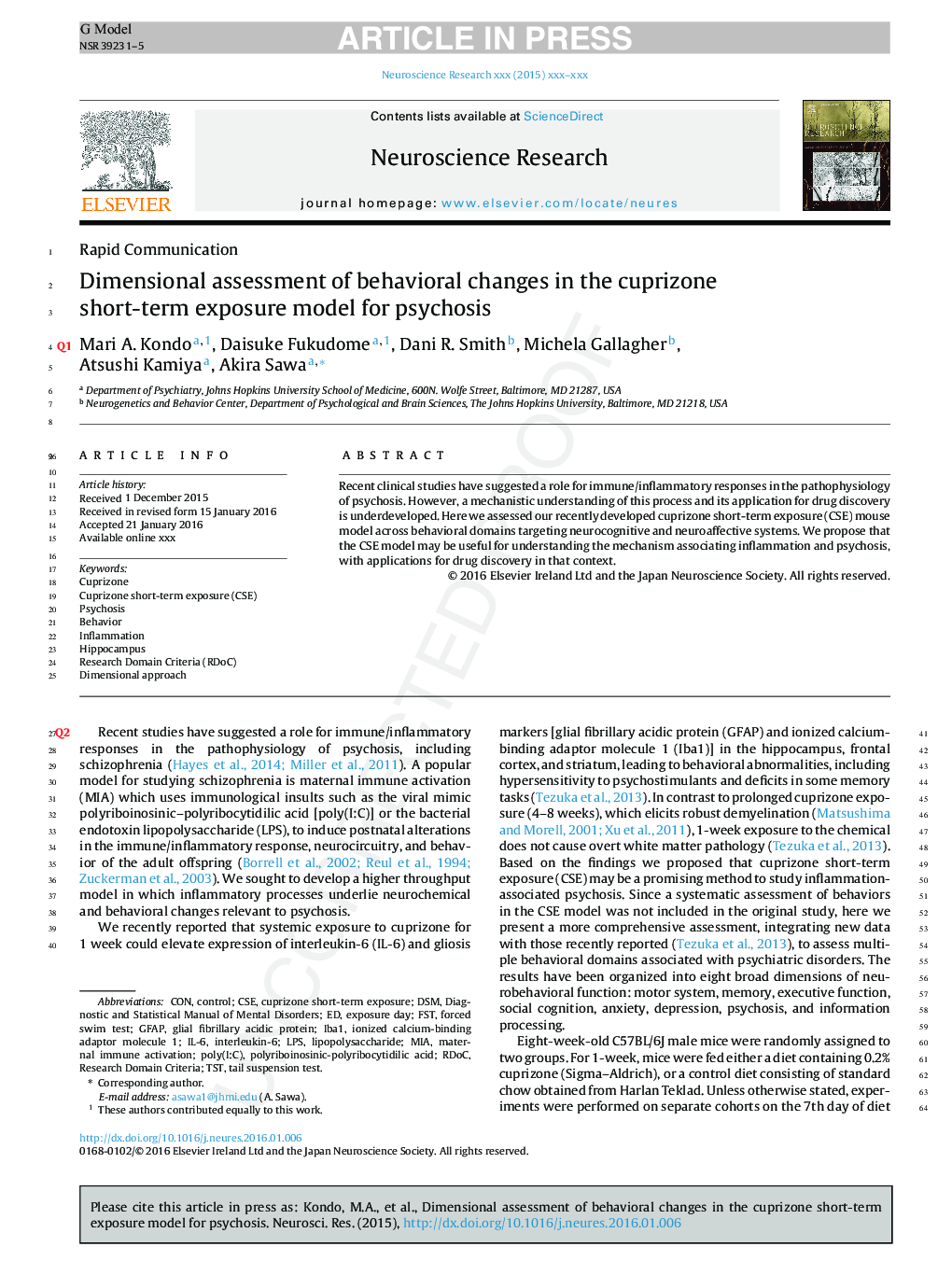| Article ID | Journal | Published Year | Pages | File Type |
|---|---|---|---|---|
| 6286034 | Neuroscience Research | 2016 | 5 Pages |
Abstract
Recent clinical studies have suggested a role for immune/inflammatory responses in the pathophysiology of psychosis. However, a mechanistic understanding of this process and its application for drug discovery is underdeveloped. Here we assessed our recently developed cuprizone short-term exposure (CSE) mouse model across behavioral domains targeting neurocognitive and neuroaffective systems. We propose that the CSE model may be useful for understanding the mechanism associating inflammation and psychosis, with applications for drug discovery in that context.
Keywords
LPSResearch Domain Criteria (RDoC)RDoCMIAIBA1cuprizoneTSTFSTGFAPIL-6CSEDSMTail suspension testforced swim testinflammationinterleukin-6conDiagnostic and Statistical Manual of Mental DisordersBehaviorPsychosisDimensional approachmaternal immune activationlipopolysaccharideResearch Domain Criteriaionized calcium-binding adaptor molecule 1HippocampusGlial fibrillary acidic proteinpoly(I:C)Control
Related Topics
Life Sciences
Neuroscience
Neuroscience (General)
Authors
Mari A. Kondo, Daisuke Fukudome, Dani R. Smith, Michela Gallagher, Atsushi Kamiya, Akira Sawa,
